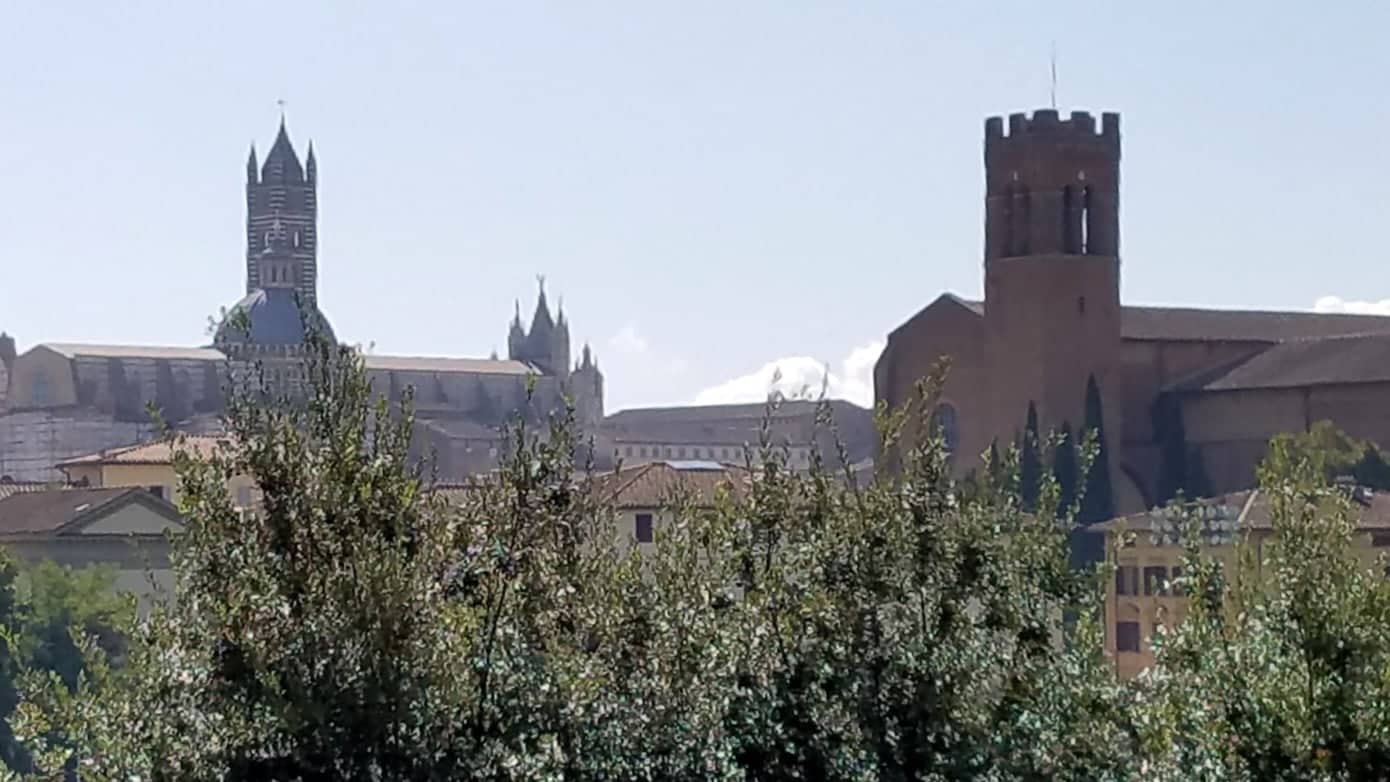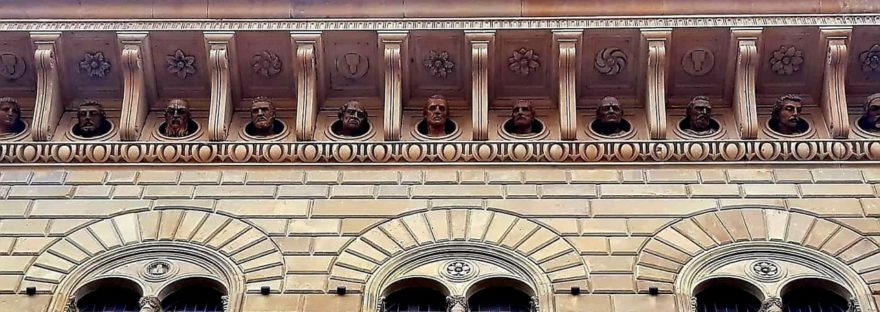Traveling through unknown places could be a great challenge. Every city, large or small, can quickly become a great maze if we do not identify points of reference that helps locate ourselves on the route. For example, a city like Siena, in the Tuscany region, can create some anxiety.
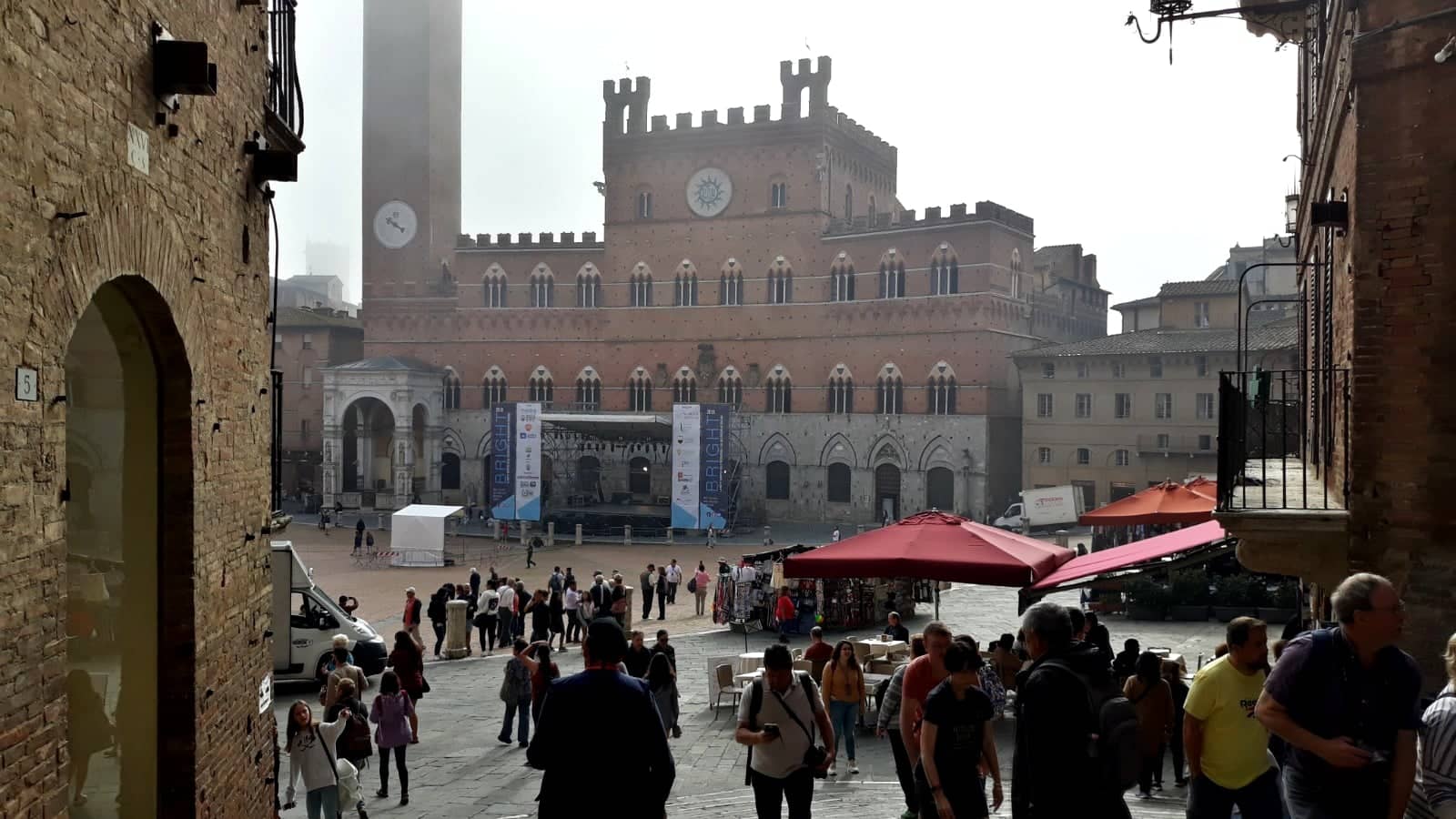
The historic center of Siena has many small streets, where not all lead to the same destination or address. Therefore, it was extremely important for us to mark the route of the city tour of the “Capitoline wolf”.
Surrounding precisely the “Capitoline wolf” is the legend that the brothers “Senius and Aschius”, sons of Remus, fled with the “Capitoline Wolf”, from the Apollo temple in Rome and founded the town of Siena, when his father was killed. It is for that reason that the “lupas” or wolves are a symbol of both Rome and Siena.
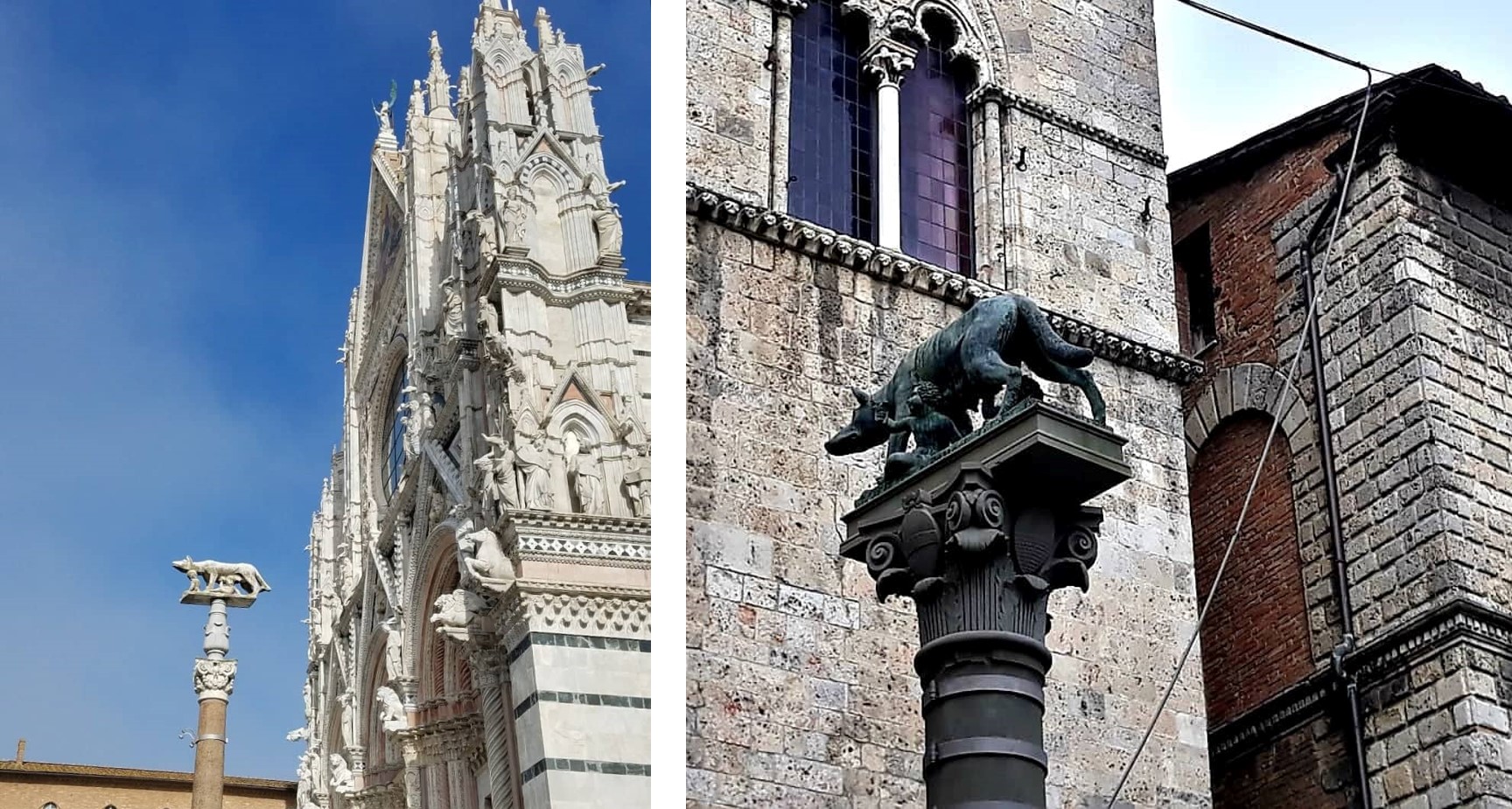
It is down the Bianchi di Sopra road, that we are the first of several “lupas”, which served as reference points, specifically in front of the Palazzo Tolomei. This structure, built as a palace for the Tolomei family at the end of the 13th century, is one of the oldest buildings in the city. In addition, it served as City Hall until the “Palazzo Publico” was finally built in the “Piazza de Campo”. The building today houses the “Cassa di Risparmio di Firenza”, a savings bank.
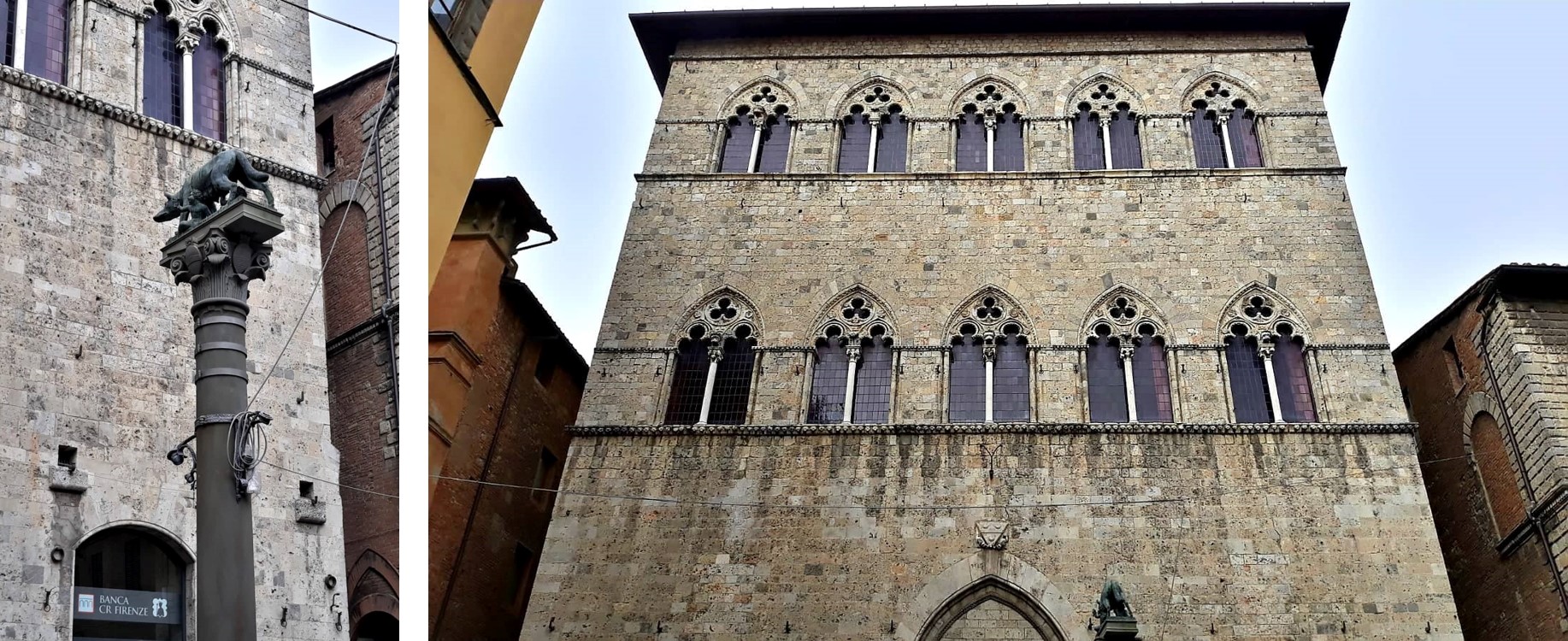
A meeting and reference point widely used by tour guides is in front of the “Palazzo Salimbeni”. This Gothic palace was home to an old merchant family of Siena. The palace is still home to the oldest commercial bank in continuous operation in the world, “Banca Monte dei Paschi di Siena”.
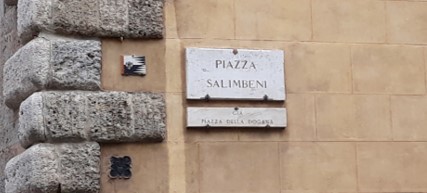
In the center of the square, the statue of Sallustio Bandini, an important figure in the history of Siena between the 17th and 18th centuries, also serves as a reference point. In addition, in this square is the Palazzo Spannocchi, structure of the Renaissance of the fifteenth century. It was Ambrogio Spannocchi, treasurer of Pope Pius II, who built this palace. In the upper part of the building there are niches where the heads of important figures of the city sprout. A reference point difficult to forget.
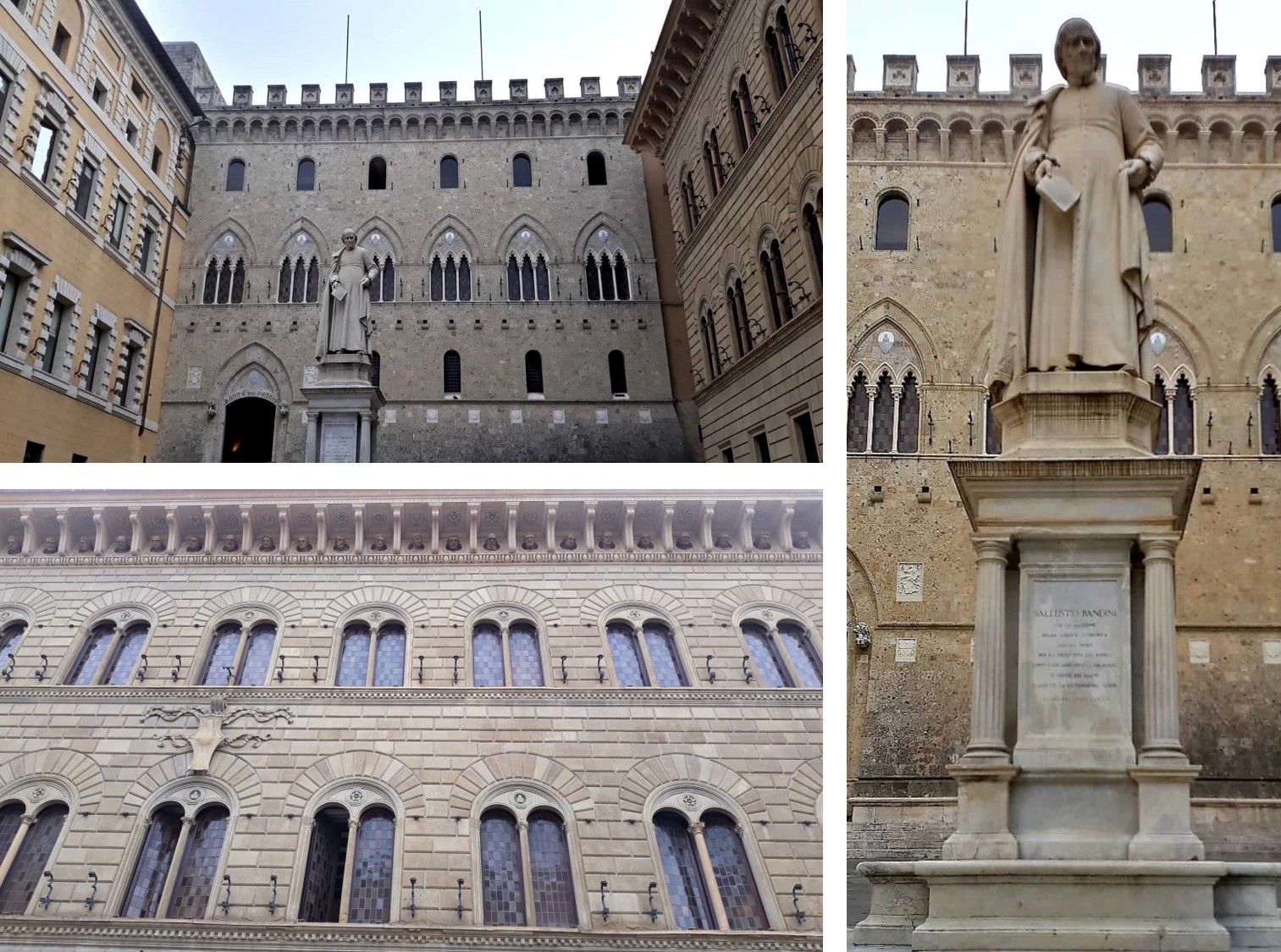
The “Loggia della Mercancia” also known as the Lodge of St. Paul in a white and Renaissance building with Gothic details. It was built in the 15th century and its columns are adorned with statues of religious characters. The structure is located at the intersection of the three most important roads in Siena, the “Via Banchi di Sopra, Via di Citta and Via Banchi di Sotto”, a branch of the “Via Francigena”. This intersection is known as the “Croce del Travaglio” or the Travaglio crossroad.

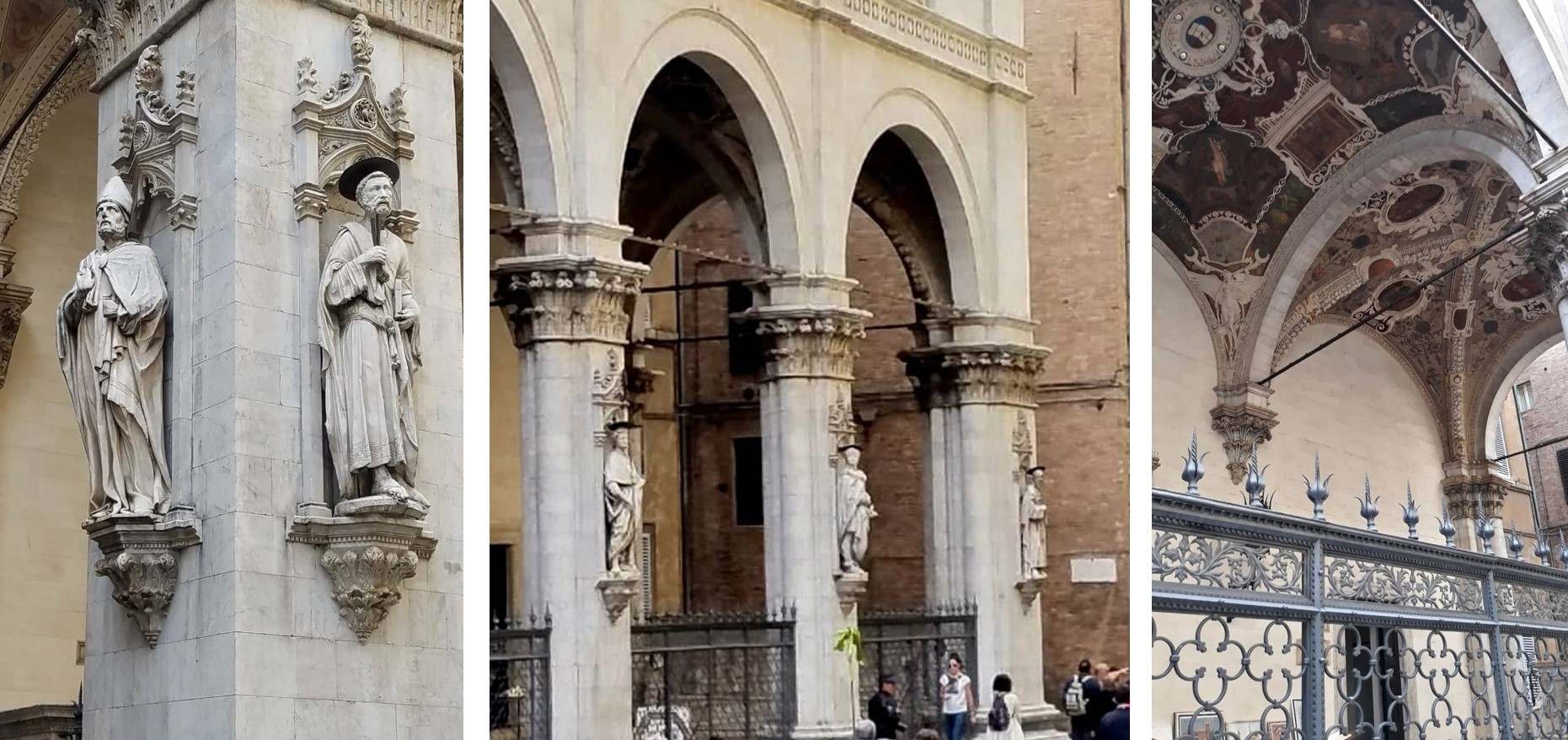
Knowing and discovering where these landmarks were located helped us to decipher the maze that was the beautiful city of Siena.
